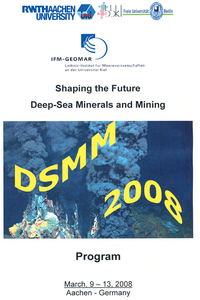
The goal of the organizers of the congress was to bring together scientists from various branches of geology: technologists, lawyers, ecologists, engineers and economists specializing in various types of raw materials, as well as students of relevant special fields, who would have an opportunity to get new information from speeches of speakers and discussions. In total, about 90 participants from 20 countries attended the congress. Naturally, most of the scientists were from Germany and neighbouring countries, however, representatives of almost all continents took part in the congress, including representatives of the Ukrainian Association of Geologists. The involvement is associated not only with the high content of basic (ferrous) and noble metals in the ocean formations, but also with the presence of a number of strategically important metals (Co, Ni, In, Ga, Mo, Se, and Te) in the ores, whose role is constantly growing in the field of production of modern generations of solar cells, semiconductor technologies and other advanced industries. The development of this direction will influence the future of the industry and the economic and technological potential of developed countries. Thus, Ukraine is directly interested in the future development of such a source of metals.